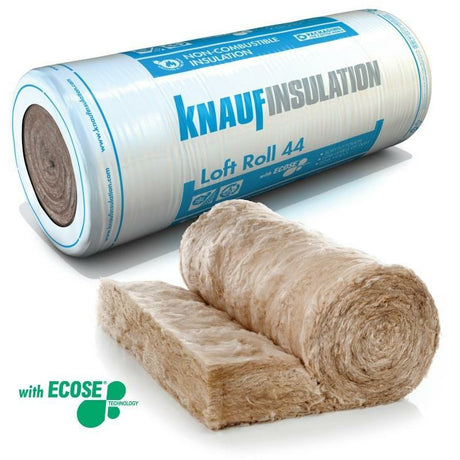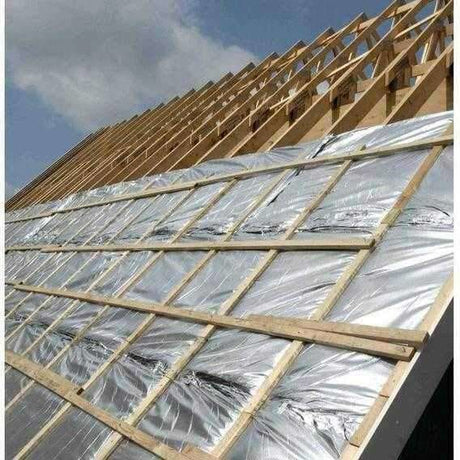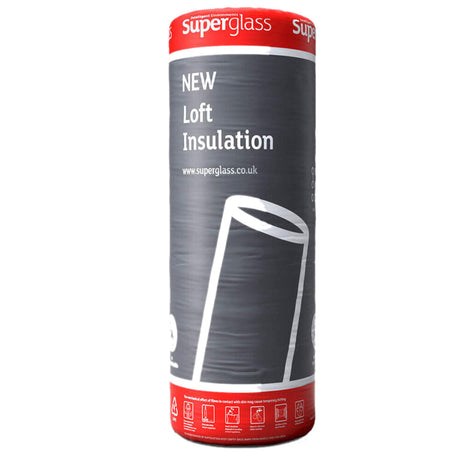It can be tough to know which loft insulation is best. Many things need to be considered, including the different types and materials used. Insulating your loft isn’t a decision that can be taken likely so the different factors must be considered extensively before deciding. Here are some answers to those loft insulation questions you’ve been wanting to ask:
What Is Loft Insulation?
Loft insulation is a barrier of material found within your roof space. It is often located between the joists of your home's loft floor, enabling you to keep warm in your living space and maintain a cool loft. It works all year round and stops a large amount of energy escaping from your home. It traps heat in air pockets and stops it from escaping through the roof or walls of your home. As well as loft insulation, you can also get roof insulation which is located between the tiles and the rafters which allows you to keep the warmth of your living space in your roof space as well.
What Materials Are Used in Loft Insulation?
Many different materials can be used for loft insulation. These include mineral wool, which is easy to install, sheep’s wool which is both safe to touch and breathable, glass wool or fibreglass which is fire resistant and insect repellent or blown cellulose which is recycled newspaper.
There are other options if you would like to avoid using wool. If you have a large loft, insulation boards might be suggested, as they can be cut to size and fit perfectly between the joists and the rafters. Insulation slabs are easy to install and are one of the most fire-resistant choices.
Sometimes known as multifoils, there is also the option of foil insulation, which allows heat to be reflected into the room and is super easy to install.
What Type of Insulation Do You Need?
This all depends on whether you want a cold or warm roof. If you use your loft for general storage a cold loft is preferable, whereas if you will be using the space personally, you will want to create a warm loft.
If you want a cold roof, you will want to insulate the joists, and you can take your pick from a number of loft roll materials. You can also use insulation boards if using the space for storage. However, if you want a warm roof, you will want to insulate the rafters and the choice of materials is not as broad. Mineral or glass wool insulation in batts tends to be one of the best choices for this or insulation boards which can be cut to the right size.
Why Should You Consider Loft Insulation?
It can help lower your energy bills as well as reduce global warming. Not only this but it lowers the risk of wear and tear to your boiler. The installation of loft insulation must meet the minimum energy efficiency values that were set out in the Approved Documents of the building regulations so you know that it is as energy efficient as it can be.
You might also be considering acoustic insulation which stops noise transfer so you won’t annoy the neighbours with your noise and likewise, you can protect yourself from outside noise too.
There are many benefits to choosing loft insulation. These include your home feeling warmer in winter and cooler in summer, less problems with condensation and how long it lasts – up to 40 years for most materials used and up to 50 years if you choose to use sheep’s wool. It is incredibly cost effective and helps you to do your bit on environment.
What Savings Can Be Made?
Different properties can see savings of hundreds of pounds per year, thanks to choosing loft insulation, with the NIA stating that detached bungalows could have a potential saving of £195 per year whilst a detached house could save £225. These different properties could also see a massive amount of carbon dioxide saved because of their insulation with detached bungalows saving around 790kg and detached houses 920kg!
How Thick Is Loft Insulation?
Loft insulation can vary in thickness from 250mm upwards. The Government recommends a minimum depth of 270 millimetres with many new properties exceeding this. However, certain materials have different recommended depths with cellulose at 220mm and rock wool at 250mm under the Government recommendation.
Optimum depth is said to be between 250mm and 270mm but older houses may find they have a much lower thickness as the standard thickness in years gone by was a lot less – in the 1980’s, it was standard to install any thickness between 25mm and 50mm.
The thicker the insulation, the better it will be at stopping heat from escaping through the roof. However if it is too thick, you could have ventilation problems so make sure any insulated area is well ventilated.
What Is the Best Thickness for Loft Insulation?
As mentioned above, the Government recommends a minimum depth of 270mm but this might not necessarily be the best thickness. Many new properties are going up to a depth of 300mm. You can exceed this depth but may lose a little space.
Between 250mm and 270mm is the optimum depth however an increase can be good too. As long as the loft has adequate ventilation, increased levels of loft insulation are fine.
Conclusion
When it comes to knowing which loft insulation is best, there are many things that need to be considered. Not only do you need to consider the different types of insulation you can choose from but you also need to consider your budget – some types of loft insulation are more cost effective than others. You also need to think about what you are using your loft for – the type of insulation you choose will depend on this. Once you know what options you have, you can make the perfect choice.
If your looking to board your loft then read our how to board a loft guide here





















